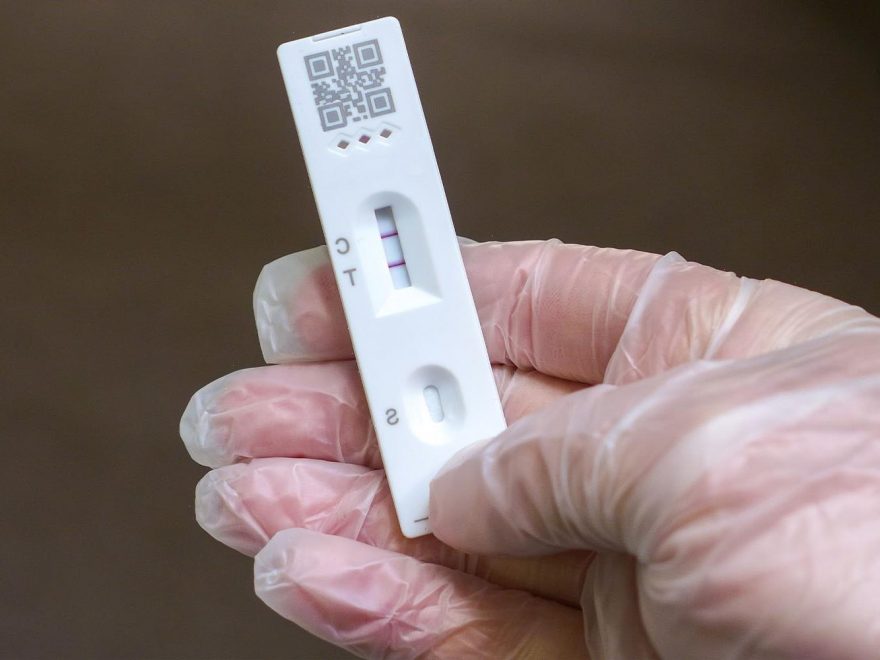THE Centers for Disease Control has revealed the days when people infected with Covid-19 are at their most contagious.
It has also highlighted that a person can spread the virus for days before they themselves show symptoms or test positive.

The CDC recently updated guidelines on isolation and quarantine to reflect the current science on the Omicron variant for when and how long an infected individual is most contagious.
Growing evidence suggests that Covid-19 transmission occurs most often one to two days before the onset of symptoms, and during the two to three days afterward.
"It is taking less time from when someone is exposed to Covid to potentially develop an infection," Chicago Department of Public Health Commissioner Dr. Allison Arwady said Thursday, NBC Chicago reports.
"It is taking less time to develop symptoms, it is taking less time that someone may be infectious and it is, for many people, taking less time to recover… Because many more people are vaccinated."
Vaccine effectiveness & Omicron
Expert studies have shown that the risk of severe illness from Covid-19 is reduced by 90 percent or more among people who are fully vaccinated.
While there are breakthrough cases of Covid among people who are vaccinated, they are rare.
In the event of a breakthrough case, victims are highly unlikely to be hospitalized with severe or deadly symptoms from the virus.
Health officials have advised that the Omicron variant is more infectious and could lead to further breakthrough cases.
Yet the spread can be offset by all vaccinated Americans receiving a booster shot.
Current vaccines are expected to protect against severe illness, hospitalizations, and deaths due to infection with the Omicron variant.
With other variants, like Delta, vaccines have remained effective at preventing severe illness, hospitalizations, and death.
Studies have also shown that side effects from the vaccine are extremely rare.
Source: Centers for Disease Control and Prevention
CDC data shows that after seven days, the risk of transmission is drastically reduced.
"In that five-to-seven-day window, you know, there's some depending on whether people have been vaccinated, underlying conditions, etc., but the risk drops a lot and the feeling is that in the general population, combined with masking, etc. the risk really is very low," Arwady explained.
Most read in The Sun

DO YOUR BIT
5 important things you should do NOW to help Britain beat Covid, says Boris

Gogglebox's Georgia Bell reveals she's pregnant with her first child

TV star Igor Bodganoff dies 'from Covid' at 72 days after bug killed twin

An Asda delivery driver handed CIGARETTES to my 13-year-old daughter
For those who are not exhibiting symptoms, the CDC guidance states that these individuals should be considered contagious up to two days before their positive COVID test.
Among the traditional COVID symptoms of coughing, fever, and loss of taste and smell, the CDC says another symptom can be a pale, gray, or blue-colored tinge on your skin, lips, or nail beds.
The CDC recommends waiting five days after exposure to get a Covid test, or soon after symptoms occur.
"If symptoms occur, individuals should immediately quarantine until a negative test confirms symptoms are not attributable to Covid-19," the guidance states.
Even if you've had Covid once before and are fully vaccinated, the CDC advises wearing a mask in public as immunity does not last forever and it is possible to get infected twice or more.
A triple-shot is effective against the Omicron variant, which has swiftly become the most dominant in circulation.
However, of Omicron cases, between 10 and 15 percent are reinfections, Professor Neil Ferguson told BBC Radio 4's Today program.
STAGES OF OMICRON
There is a clearly established path now between when an individual is exposed to the virus and how long they may feel ill.
Though a string of positive studies does suggest that Omicron is milder than its Delta variant counterpart, one should remain alert nonetheless.
Stage one is contact with an infected person. It's likely you won't be certain when you may have picked up the virus, as just a breath of infected air is enough to catch it.
Stage two is around two or three days with no symptoms presenting yet.
Omicron is thought to be much faster working than Delta or Alpha – so you will likely see symptoms sooner, around the two-day mark.
Stage three is when early symptoms start to pop up, like lower backache, night sweats, and a scratchy throat.
Others include headaches, muscle aches, runny nose, sneezing, nausea, and loss of appetite.
Stage four is test-taking – which, if you've had these symptoms is quite likely to come back positive.
Stage five is isolation if you have tested positive or from when you started noticing symptoms.
Of course, if you are certain you are unwell and you don't want to pass this on, you may do self-imposed isolation.
However, despite all these stages, you may miss them altogether and just test positive when doing the rapid test we should all be taking regularly.
NEW VARIANTS
The news comes as a new variant of Covid with 46 mutations has been found in France but is spreading slowly with only 12 cases spotted so far.
The new strain is thought to have the potential to spread quickly and be vaccine-resistant – but is no current cause for alarm, especially as boosters work against the similarly mutated Omicron.
We pay for your stories!
Do you have a story for The US Sun team?
Email us at [email protected] or call 212 416 4552.
Like us on Facebook at www.facebook.com/TheSunUS and follow us from our main Twitter account at @TheSunUS
Source: Read Full Article
